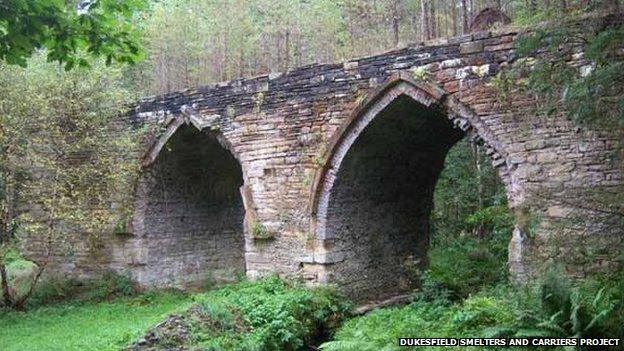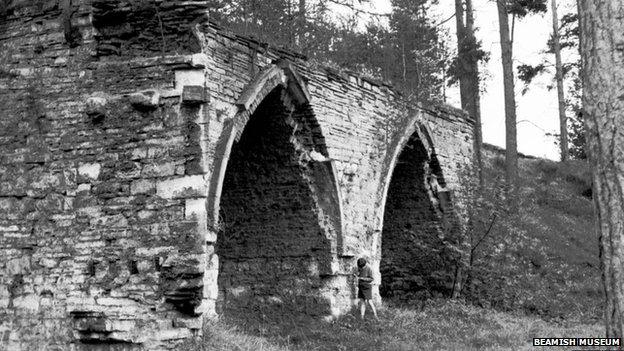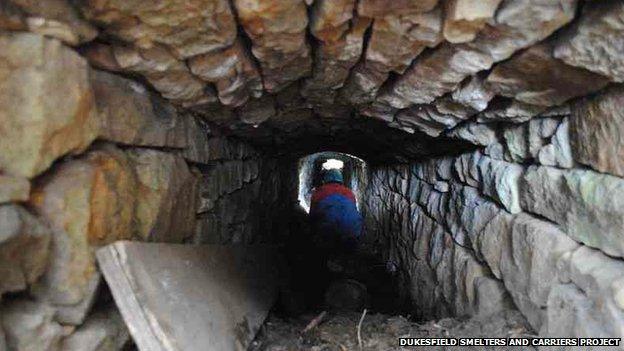Northumberland archaeologists unearth history of smelt mill
- Published

Archaeologists are to explore the remains of a former lead smelting mill in Northumberland in the hope of finding out more about the site's industrial history.
Dukesfield Smelt Mill on the banks of Devil's Water near Hexham, was used from the mid 17th Century until 1835.
Today, all that remains above ground at the site is its Grade II listed stone and brick arches which carried the flue from the smelt mill to nearby chimneys.
A team of archaeologists and volunteers hope to unearth the remains of the site's hidden underground history from an excavation.
Industrial archaeologist Pete Jackson, said: "Across the North Pennines you'll find dozens of mine shafts.
"Lead mining was a big development in northern England and we're anxious to make people think about that and the impact and history of the landscape."

The Dukesfield estate was bought by William Blackett in 1668 who mined lead in Weardale and Allendale for several years.
Once a thriving part of the lead industry, carriers walked hundreds of pack ponies over the moors bringing metal ores from the Pennines, which after smelting at Dukesfield, would be taken to Blaydon to the waiting ships on the River Tyne.
The plant closed in 1835 due to the opening of the Newcastle to Carlisle Railway which allowed the transport of ore to processing plants on Tyneside.
The Dukesfield Smelters and Carriers Project is led by the Friends of the North Pennines and in partnership with Hexhamshire and Slaley Parish Councils.

In 2013, the group began digging at the site after receiving a grant from the Heritage Lottery Fund.
A geophysical survey and evaluation trenching found some of the site visible as built remains, including chimneys and a run-off leat.
It also unveiled the remains of a "unique" feature which is believed to be the remains of fuel condenser chambers.
Before the long flue was developed, the smelters experimented with other ways of capturing the dust and it is believed that the condenser chambers at Dukesfield are an early example of an experimental method of capturing the dust.
Mr Jackson said it is probable that they "are unique within the UK" as many at other smelt mills were demolished or modified.

Now the group are returning to the site to dig deeper into the foundations found during the previous excavations.
The team also want to explore the history of the arches and why they are structured like a bridge and decorative.